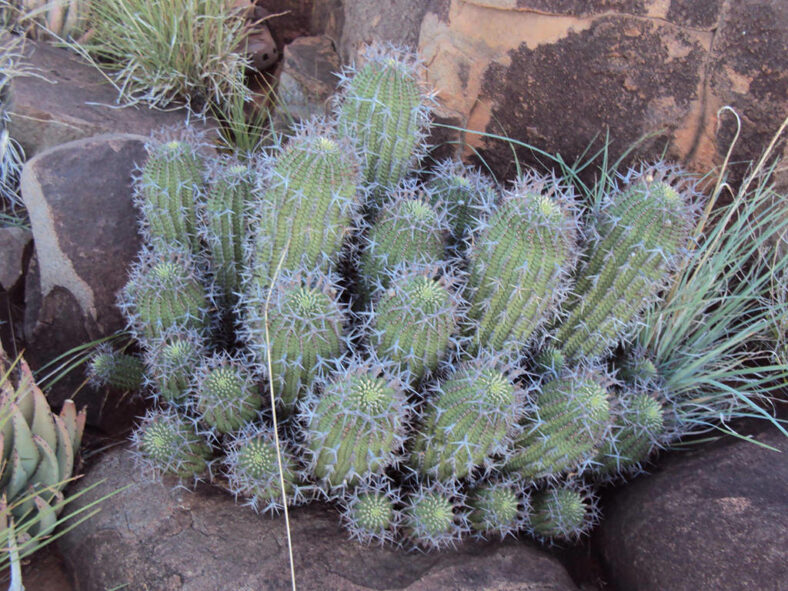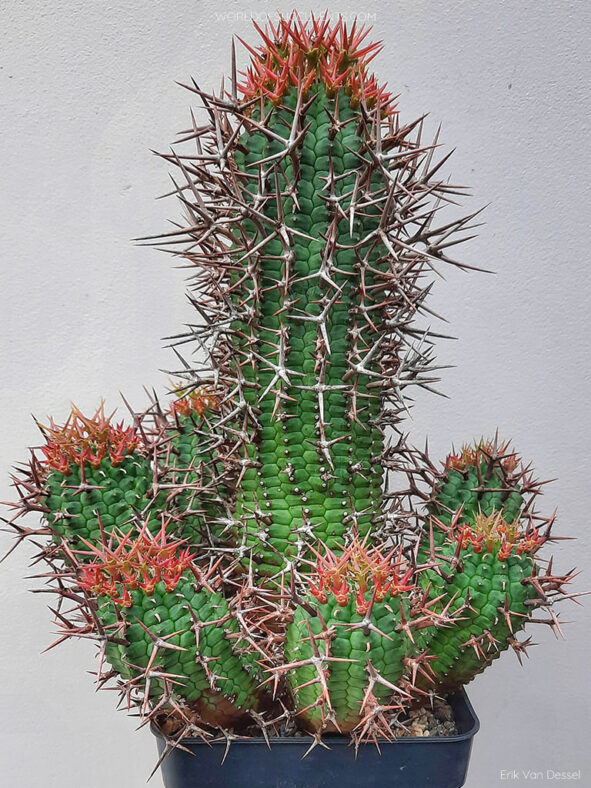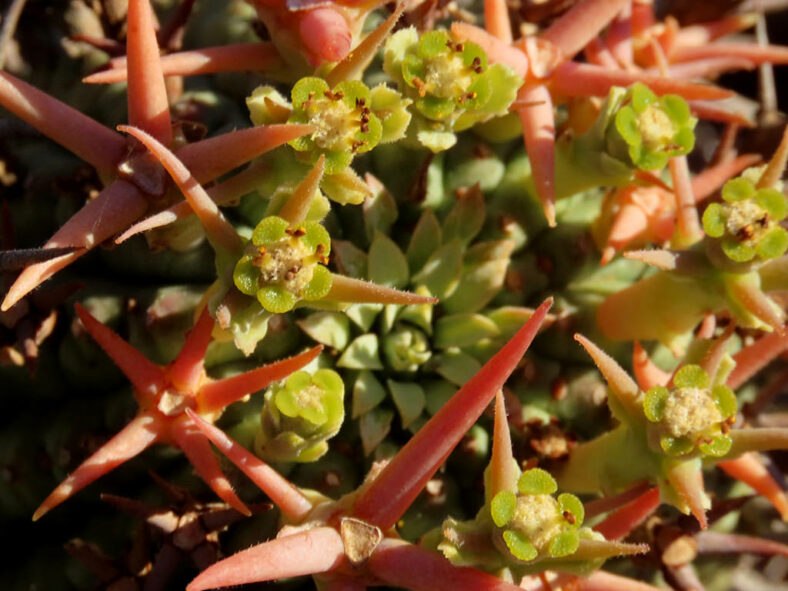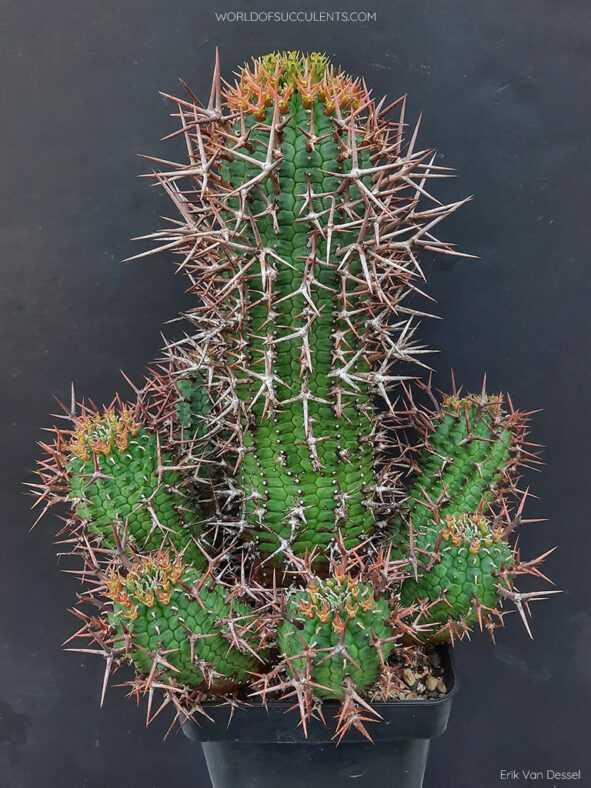In 1685, Governor Simon van der Stel (1639-1712) and his expedition camped out in Namaqualand, near the present town of Springbok. While there, one of the natural scientists in the group, Mr H. Claudis, apparently discovered Euphorbia stellispina.
Scientific Name
Euphorbia stellispina Haw.
Synonym(s)
Euphorbia astrispina, Euphorbia stellispina var. astrispina
Scientific Classification
Family: Euphorbiaceae
Subfamily: Euphorbioideae
Tribe: Euphorbieae
Subtribe: Euphorbiinae
Genus: Euphorbia
Etymology
The specific epithet "stellispina" (pronounced stel-ih-SPIN-uh) means "star-spined" and refers to the star-shaped arrangement of the spines of this species.
Origin
Euphorbia stellispina is native to South Africa. It occurs on stony slopes with scattered dolerite rocks from Gordonia in the west to the Great Karoo.
Description
Euphorbia stellispina is a spiny succulent with green stems that branch out from the base, forming a dense clump with age. The stems are cylindrical to club-shaped and can grow up to 28 inches (70 cm) tall and 3.2 inches (8 cm) in diameter. They have obscure tubercles fused into 10 to 16 low angles lined with many stout, persistent peduncles, each branching below the tip into 3 to 5 spreading, rigid spines reaching a length of 4 inches (1 cm). Tiny, short-living leaves appear in the central area where the stem ridges converge.
In winter, Euphorbia stellispina produces many cyathia (false flowers) around the tip of the stems. The cyathia are yellow with five green to reddish glands. The male and female flowers occur in separate plants. The fruits are smooth capsules with three locules, each containing one seed.

How to Grow and Care for Euphorbia stellispina
Light: For optimal growth, Euphorbia stellispina needs plenty of sunlight. Place it near a sunny window or move it to your balcony or garden during the warmer months, gradually increasing sun exposure to avoid sunburn.
Soil: Use a well-draining soil, either a commercial potting mix formulated for succulents or create your own well-draining soil.
Temperature: While high summer temperatures are not a problem, low winter temperatures can damage or kill your plant. Euphorbia stellispina grows best in USDA Plant Hardiness Zones 9b to 11b, with average minimum winter temperatures ranging from 25 to 50 °F (-3.9 to 10 °C).
Watering: From spring to fall, water the plant when the soil's top inch (2.5 cm) feels dry. Reduce watering in winter and give it just enough water to prevent wilting. In the warm season, evening is the best time of the day for watering.
Fertilizing: To ensure the potted plant receives sufficient nutrients, apply a balanced fertilizer in a 10-10-10 NPK formulation, diluted to 1/4 strength weekly during the growing season.
Repotting: Although your Euphorbia stellispina does not need to be repotted often, it will benefit from repotting when it outgrows its pot. Repotting is best done in early spring, at the beginning of the growing season. Wear gloves, protective clothing, and appropriate eye protection when handling this plant.
Propagation: The easiest and fastest way to propagate this plant is by stem cuttings. While it is possible to start the plant from seeds, germination can be challenging. Take cuttings during the growing season, and spring is the best time to sow the seeds.
Learn more at How to Grow and Care for Euphorbia.
Toxicity of Euphorbia stellispina
Euphorbia stellispina produces a poisonous white milky sap that may cause burns or irritation if it comes into contact with the skin or eyes. Therefore, it is best to keep this plant away from children and pets.
Links
- Back to genus Euphorbia
- Succupedia: Browse succulents by Scientific Name, Common Name, Genus, Family, USDA Hardiness Zone, Origin, or cacti by Genus
Photo Gallery
Click on a photo to see a larger version.


